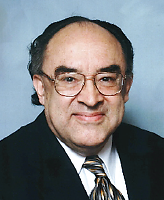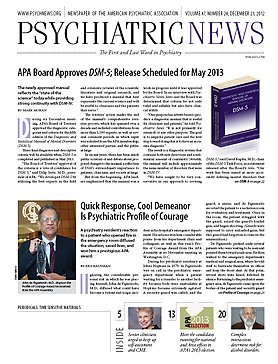There is a developing consensus that the presence of psychosis in childhood is consequential and that it is a risk factor for future psychopathology.
In general terms, psychosis is a disturbance of the sense of reality that impairs psychosocial development, cognitive development, and adaptive functioning. Commonly, psychosis implies the presence of delusions and hallucinations (positive symptoms), difficulties in relating to others, and an impairment of understanding and appropriately expressing emotion (negative symptoms). More importantly, in major psychoses, there is a disturbance in language and thinking that interferes with interpersonal communication and understanding reality (thought disorder).
Psychotic features are common in mood disorders of childhood and adolescence. These symptoms are also very common in children who have been victims of trauma—that is, physical, sexual, or emotional abuse. In practical terms psychotic disorders are divided into primary and secondary. In the first group belong the major psychoses: schizophrenias, schizoaffective disorders, and the so-called psychotic disorders NOS.
In the second group belong the psychoses that frequently accompany a number of severe psychiatric disorders like PTSD, bipolar disorders, mood disorders, and other psychiatric conditions. Clinically, it is not always easy to separate these groups, and as many as 30 percent of patients diagnosed with major depressive disorders turn out to have schizophrenias. For the specific criteria for the diagnosis of psychotic disorders, the reader is referred to the current DSM-IV-TR and the upcoming DSM-5.
The assessment of psychosis in children assumes that the clinician has a good background in psychosocial and neurolinguistic development; that assessment consists of six steps:
Gathering of history, developmental background, and family history.
Physical and neurological evaluation. In every major psychosis emerging during adolescence, a neurological evaluation is mandatory. The examiner needs to rule out medical, neurological, and drug-related schizophrenia-like reactions.
Labs and other testing procedures (drug testing, EEG, imaging, genetic, and others studies).
Interpretation of findings. The psychiatric evaluation entails observation and inspection, as well as inquiry about symptoms. The examiner observes how “normal “or “odd” the child looks and his/her quality of relatedness and participation in the interview. The examiner notes the child’s communication and the nature of the child’s narrative to detect evidence of thought disorder or immaturities of speech. Throughout the interview, the examiner is attentive to the child’s demeanor and the quality of the eye contact and his/her emotional display (is the affect appropriate or inappropriate?). The examiner also notes the nature of the child’s language and the quality of the thought processes. The inspection will focus on the determination of the presence of dysmorphic features, involuntary movements or stereotypies, and the ascertainment of the presence of minor physical anomalies associated with neurodevelopmental and genetic disorders.
Diagnosing psychosis in adolescents is a matter of systematic interviewing and is rather straightforward. The diagnosis of psychosis in children (preschoolers and preadolescents), in contrast, poses developmental and language challenges. A useful technique when interviewing children under 10 years old is to make the parent an active participant in the inquiry process: the parent becomes the questioner under the evaluator’s guidance. Since sleep time is a sensitive time for the emergence of fears, this is a good topic for starting the exploration of psychotic features. The interviewer tells the parent to ask the child if she is scared at night. If the parent elicits a positive response, the parent should then ask, “What are you scared of?” The child may reveal the nature of the fear, and the exploration continues with the elucidation of what was revealed and its associated issues.
Other times, the evaluator guides the parent(s) into a systematic exploration of perceptual or paranoid ideations: Ask the child if he or she hears weird things. “Do you hear scary noises?” “Do you hear voices?” “Do you hear people talking to you when nobody is around?” If the child affirms any of these questions, the evaluation proceeds on the pertinent topic.
The evaluator may guide the parent into visual perceptions: “Have you seen monsters? Ghosts . . . shadows . . . persons?” “Do you ever feel that somebody is touching you when nobody is around?” The evaluator at some point may take over the interview when he/she assesses the impact of the responses on the parent. “Do you ever feel people say bad things about you?” “Do you feel people watch you?” “Do you ever feel there are cameras taking pictures of you?” “Do you ever feel people follow you?” “Do you ever feel somebody is after you?”
The examiner may also explore for Schneiderian symptoms by asking questions such as, “Do you feel people can read your mind?” “Do you feel people can put thoughts in your mind?” “Do you feel you can read people’s minds?” “Do you feel you can put thoughts into other people’s minds?”
Structured diagnostic testing protocols like the K-SADS PL-current and the PANSS, among others, are standard in long-term, developmental, or other research-oriented assessments.
The interpretation-of-findings phase relates to the discussion in simple terms of the nature of the child’s disturbance. In general, parents are reluctant to accept the presence of psychosis in their children; parents may explain their offspring’s perceptual or paranoid abnormalities as the impact of TV viewing, the watching of horror movies, or the effects of a vivid imagination. All initial observations should be reported as preliminary. The examiner cannot predict what kind of disturbance the child may have or how the symptoms may vary throughout development. In general, it is a good idea not to give false reassurances, such as “Don’t worry. This will go away. The child will grow out of this,” and so on, or hopeless prognostications; severe symptoms in childhood do not necessarily continue into adolescence and adulthood.
No mental status examination is complete without a systematic exploration of psychosis. Every clinician is capable of ascertaining psychosis during childhood and adolescence with sustained focus and appropriate methodology. ■

